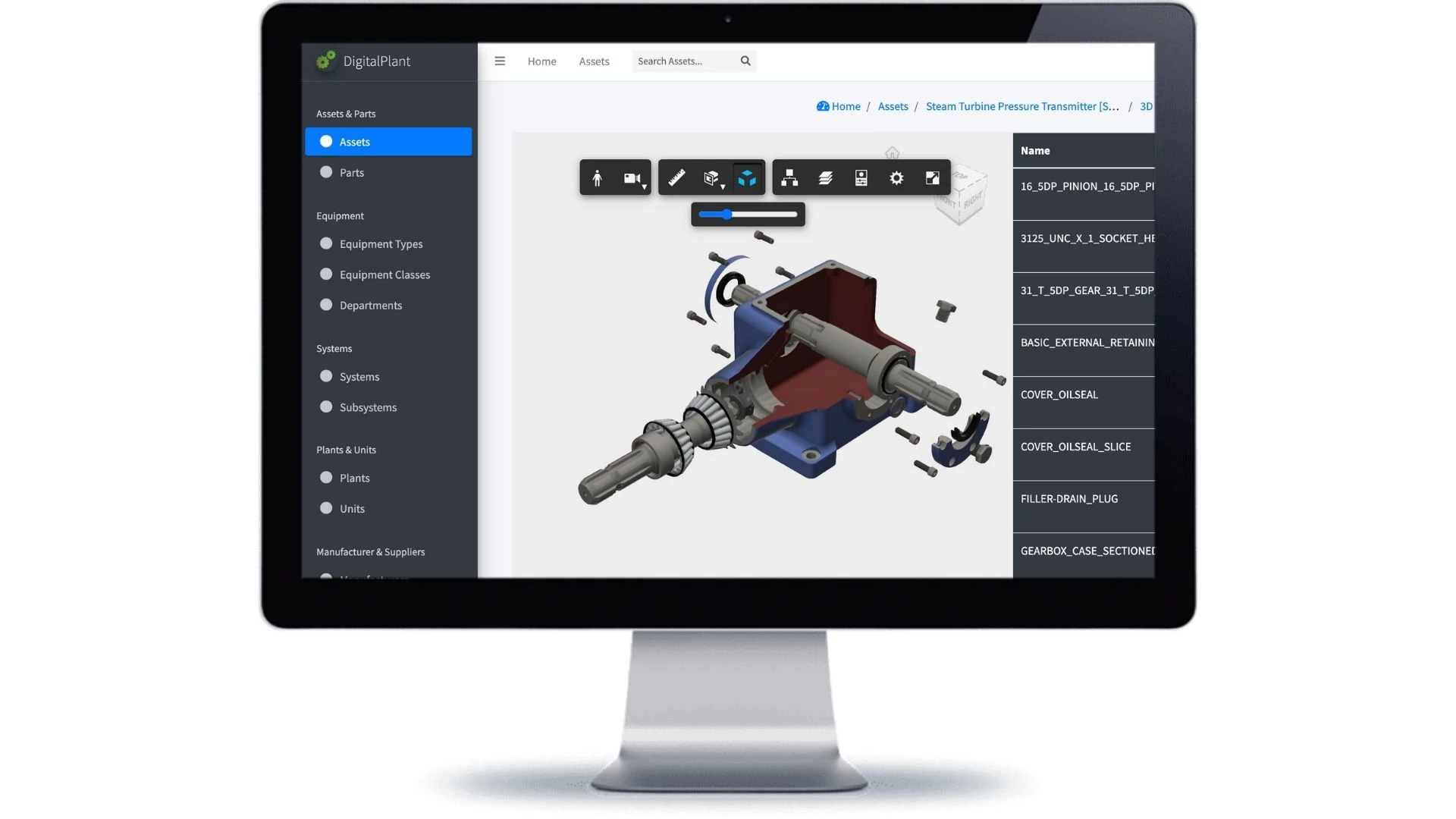Digital Plant

by
PLANEKS
About
The platform is a web application for helping personnel in factory environments efficiently retrieve relevant data for Plant assets. It aims to improve the employee’s productivity in performing operations, repair, training, and engineering functions where these assets are involved.
It is designed for industrial plants and factories, such as Nuclear Power Plants, Chemical Plants, Metal Manufacturing Plants, etc. The application aims to digitalize information about the equipment, processes, documentation, reports, and various assets, keeping it in one single place in a convenient form.
The platform has two portals:
Administration portal, where asset information is managed. Administrators use this portal to add data such as reports, documents, models, images, and videos. Each Plant has an administrator who administers the platform locally.
Regular user interface, where the Plant workers can view available asset information.
Our solution
e industrial sector where the platform will be used is heavily standardized. Data engineering requires a granular analysis of the factories’ taxonomy that will be put as the ground layer for future development. As the solution, PLANEKS and the Client decided to go through a Discovery Stage to analyze industry standards, including analysis of data collected during the operational life cycle of equipment, including installation, start-up, operation, maintenance, and modification. One of the key sources that helped to accomplish data engineering was ISO 14224:2016 standard. As a result, methodological analysis and planning through brainstorming sessions allowed PLANEKS to develop a well-planned DB schema that accurately describes the mapping between the physical factories and various DB entities.
Default Django’s admin portal didn’t correspond to the Client's expectations and had to be simplified and made more intuitive. In this case, the development solution was the customization of the default interface with custom views and templates. The solution was Django Jazzmin theme. As a result, we have overridden default elements, making the «geek» admin panel more suitable for laymen.
Every plant’s asset is supplied with a 3D model that needs to be displayed on the platform for the plant worker. One of the planned "killer features" was the "exploded view mode", which shows the relationship or assembly of various asset parts. The challenge is that the manufacturer supplies 3D models, and file formats vary. We had to come up with the solution to support 10+ file extensions and exploded mode viewer. As a result, PLANEKS implemented the viewer with the support of all necessary file formats, model textures, materials, rotation, and zooming, considering the effective resource consumption on mobile devices.
One of the main challenges for the plant worker was to access the information about the specific asset in our platform while working «in the field» and having 1000s of assets around. PLANEKS’ solution was QR code printed and stuck to each asset. Through scanning the code, a worker could access materials (including up-to-date reports and procedures) for this exact asset using his/her smartphone or tablet’s camera without knowing the asset ID or any other information. This solution manipulates the existing data without incorporating complex or costly to operate tools and technologies.
Different plant departments handle assets documentation in a variety of file formats. Our challenge was to support all of them, including the viewers' implementation for the following file extensions: pdf, CSV, txt, xls(x), doc(x), png, jpg, and various video formats, etc.
Having 1000s and tens of 1000s of assets are typical in a large Plant environment. Each of them usually has 10+ corresponding documents and files that need to be represented in the platform. The challenge here was that this data level is not standardized, and different departments control necessary information. PLANEKS came up with a human-readable structure for the data import that could be easily distributed among departments for the proper data management. It describes the format that plant workers need to follow when preparing the existing information, which will be further imported into the system automatically.
Results:
The client has everything needed for the next Sales/Marketing stages of their Product. Due to being very methodical with the project planning, PLANEKS delivered the MVP exactly as stated in the first kickoff meetings. We spent quite a bit of time refining the requirements and specifications in the early days of the project to make sure that the PLANEKS team understood the client’s requirement. This helped both teams align goals and define expected deliverables. The client was unsure of the level of service since this was our first engagement. However, PLANEKS was very responsive to changes and provided both daily and weekly summary updates. We had several scope changes during the project, and the team handled them without a hitch.

